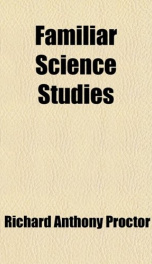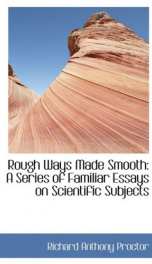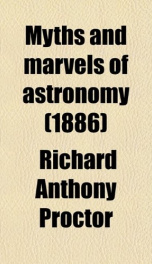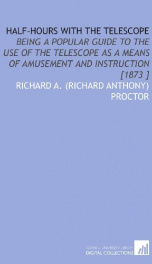familiar science studies

Purchase of this book includes free trial access to www.million-books.com where you can read more than a million books for free. This is an OCR edition with typos. Excerpt from book: 47 METEORIC DUST. Mr. A. C. Ranyard, secretary of the Astronomical Society, has recently called attention to the evidence which our earth's surface affords of her passage through meteoric systems. Meteoric dust has been collected on the summits of snow-covered mountains. In the snows of Scandinavia and Finland, or those lying far within the Arctic circle, hundreds of miles from any human habitation, particles of meteoric iron have been found. Iron dust has been gathered in ice-holes in Greenland. Nay, in matter raised from the bottom of deep oceans magnetic particles have been detected, which must have been deposited there recently, and can no otherwise have come there but from the air above those oceans, nor have reached that air except from interplanetary space. It is true that all this might have been confidently foreseen. We know in other ways that meteoric matter is constantly falling upon the earth. Yet there is a strange interest in the actual recognition of this cosmical dust. What Humboldt said of the larger meteoric masses which have fallen visibly upon the earth from interplanetary space is true (with slight change) of these more subtle signs of the earth's passage through cosmical dust: ' Accustomed to know non-telluric bodies solely by measurement, by calculation, and by the inferences of our reason, it is with a sense of wonder that we touch, weigh, and submit to chemical analysis metallic and earthly masses appertaining to the world without.' I have had occasion, in discussing the shooting stars ofNovember 25-27 (the later November system, as it may be called), to consider the history of recent research into meteoric and cometic systems, already one of the most fruitful subjects of astronomical inquiry, and likely, unless I mistake, to lead to yet more imp...
Info about the book
Series:
Unknown
ASIN:
002277436X
Rating:
5/5 (6)Your rating:
0/5
Languge:
English
Users who have this book
Users who want this book
What readers are saying
What do you think? Write your own comment on this book!
write a commentGenre
if you like familiar science studies try:
Do you want to exchange books? It’s EASY!
Get registered and find other users who want to give their favourite books to good hands!






